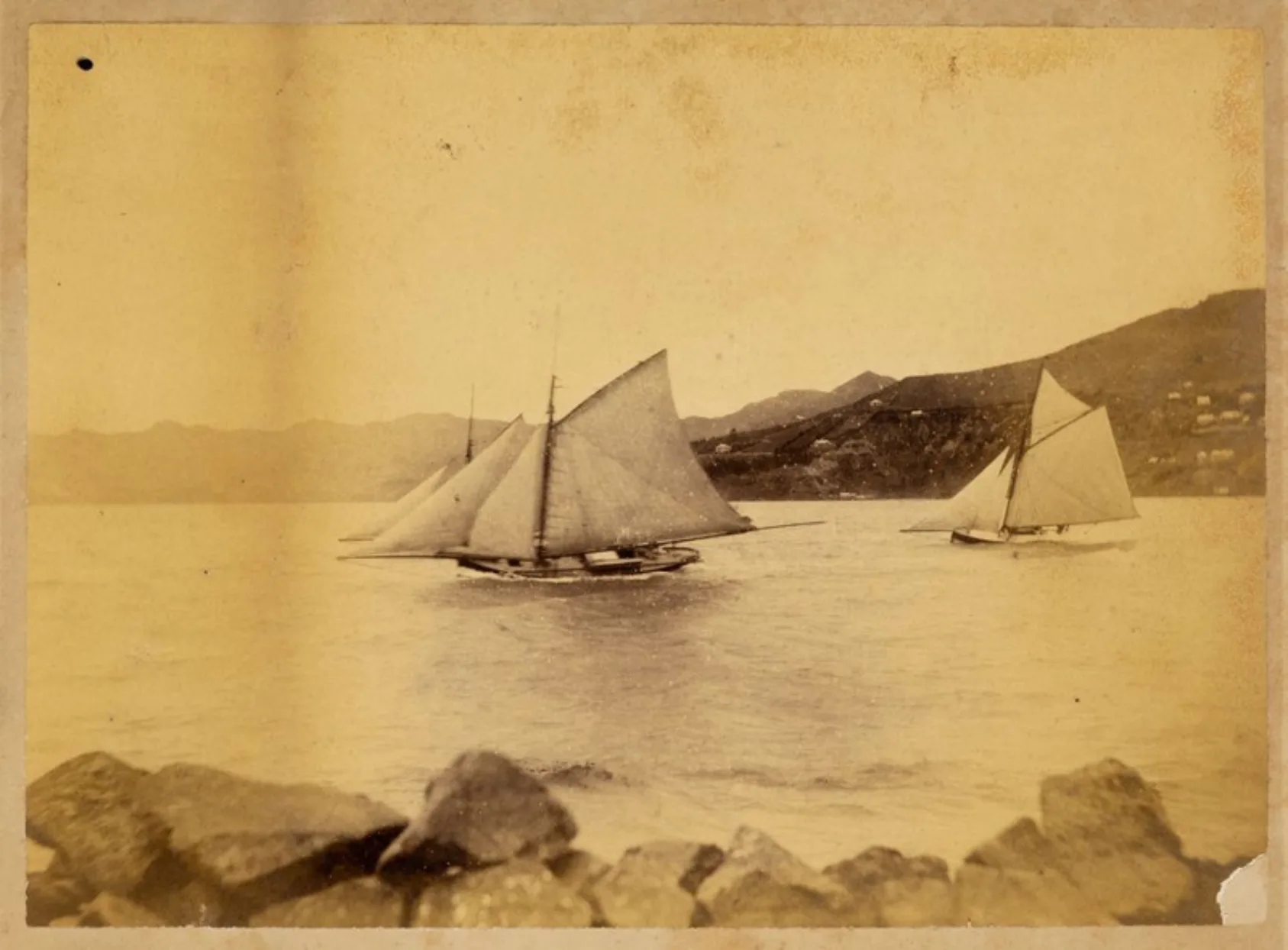PO Box 95
Lyttelton 8841
Te Ūaka recognises Te Hapū o Ngāti Wheke as Mana Whenua and Mana Moana for Te Whakaraupō / Lyttelton Harbour.

Pastime and Little Wonder with Mahanga trailing in the 1890 Lyttelton New Year’s Day Regatta.
Te Ūaka The Lyttelton Museum ref. 14692.1
https://www.teuaka.org.nz/online-collection/1135601
The 1890 Lyttelton Regatta
Yachting has long been a favoured pastime in Whakaraupō Lyttelton Harbour, with the Lyttelton Regatta Committee’s first competition being held on 24 May 1851 to celebrate Queen Victoria’s 32nd birthday – barely six months after the arrival of the Canterbury colony’s ‘first four ships’. A decade later in 1862, the Lyttelton New Year’s Day Regatta was established. After the railway tunnel opened in December 1867, the Regatta began to attract large crowds from the growing city of Christchurch and the Waitaha Canterbury Plains beyond. By the 1870s, Lyttelton's annual New Year’s Day Regatta had become the colony’s largest aquatic sporting festival!
In 1870, Scotsman William Sinclair and his Australian born son Jimmy set up their shipwright business in Lyttelton Port’s Dampier Bay next to what would become, in 1883, the port’s graving or dry dock. They were especially active in the competitive yachting scene through the 1880s with Jimmy Sinclair’s prize winning racer Little Wonder. A lightly built centreboarder, she included an innovative stacking board for the crew to ‘hike’ or ‘lean out’ over the side as the yacht heeled upwind. Taking on all-comers, Little Wonder was the region’s champion racing yacht through the mid-1880s.
Attracted by the ‘fame and fortune’ that the Sinclair’s were winning for their business, fellow Scotsman and shipwright Malcolm Miller decided to join the competition, and in 1886 built his own racing yacht, the famous Pastime, in his shipbuilding yard at Corsair Bay. At five tonnes, she was cutter-rigged and carvel-built of kauri and red beech timbers. Initially 8.5 m long with a 2 m beam, 1.2 m draft and a lead ballast jarrah keel, she was built to take on Sinclair's Little Wonder as well as the champion Dunedin built yacht Mahanga, but she failed to dominate in a series of races over the next two years. Not one to give up, Miller went back to the drawing board and rebuilt Pastime in 1889, adding extra length to her hull and rigging 125 square metres of sail. The new Pastime was completed in time for what would become the race of the century at the 1890 Lyttelton New Year’s Day Regatta.
The 1890 Regatta began promisingly enough with the morning’s fine weather welcoming the growing crowds along with his excellency, the newly appointed Governor of New Zealand, Sir William Hillier Onslow. However, as people gathered along the port town’s wharves and vantage points, the festivities were rudely interrupted by a sudden mid-morning thunderstorm and downpour that scuppered a number of rowing and swimming events while drenching their audience. The storm cleared soon enough and the sun shone through to allow the main yacht race to start with Pastime, Mahanga, Zephyr and Little Wonder all getting away in a handy north-easterly breeze. Unfortunately, this reprieve from the inclement weather did not last long and the harbour waters were soon whipped by a fierce sou’wester gale that cancelled the day’s remaining events, while the racing yachts, at times barely visible, battled on in heavy winds.
While the lead changed hands several times over the first half of the race, the increasingly rough conditions favoured Pastime. In a photograph from the race we can see Pastime spoiling Little Wonder’s clear air as Mahanga trails behind, before the storm forced the latter to retire along with Zephyr. In the end, Malcolm Miller’s Pastime took the honours in heavy squalls with his arch-rival Jimmy Sinclair’s Little Wonder the runner up some 50 minutes behind. Little Wonder would never challenge Pastime again, and it would be Jimmy Sinclair’s turn to up the ante with a new champion racing yacht, the Mascotte, launched just 11 months later.

